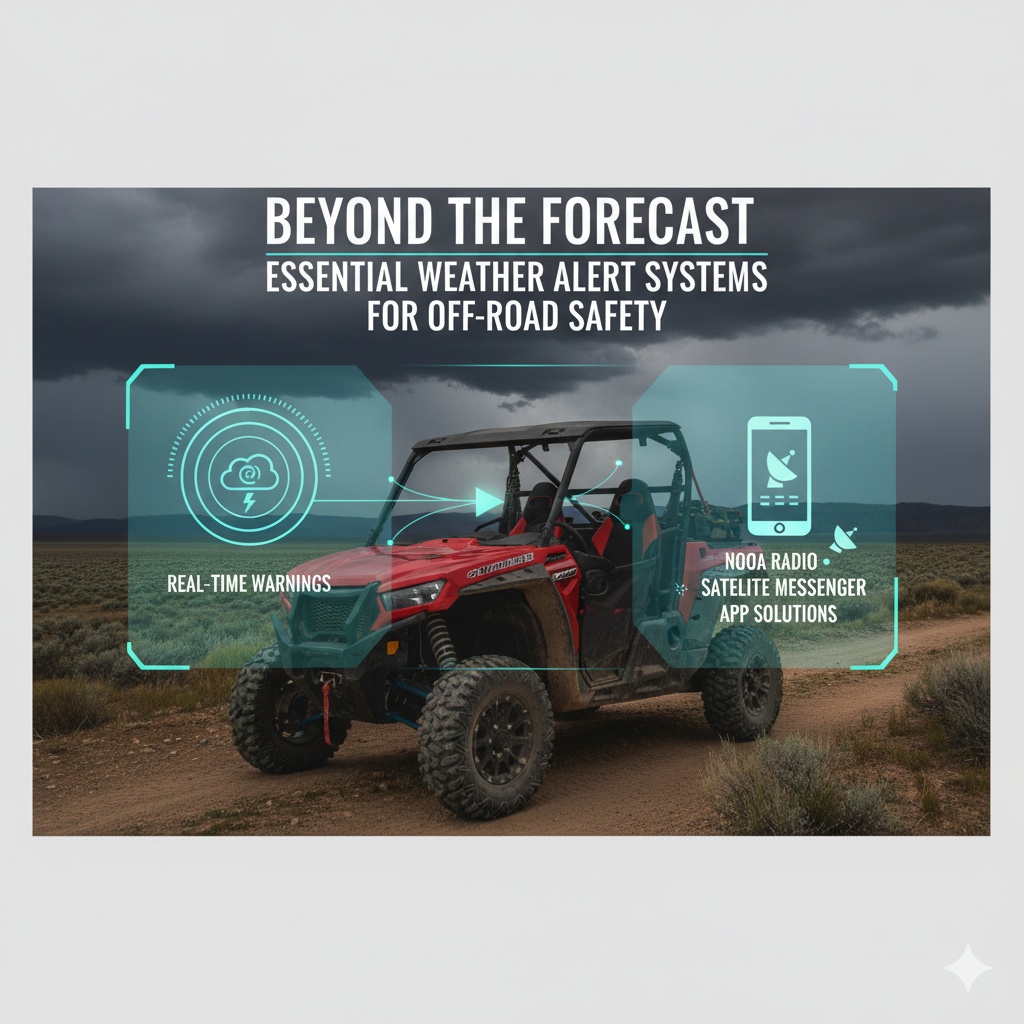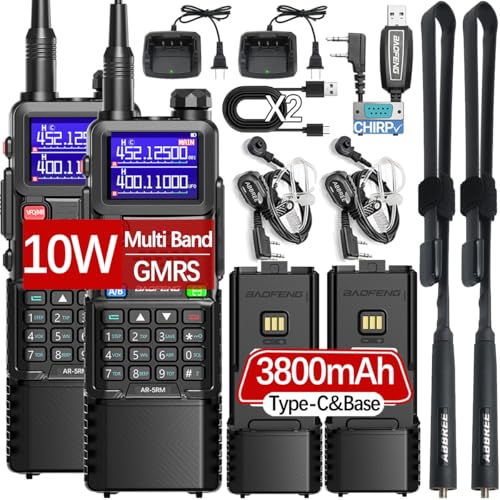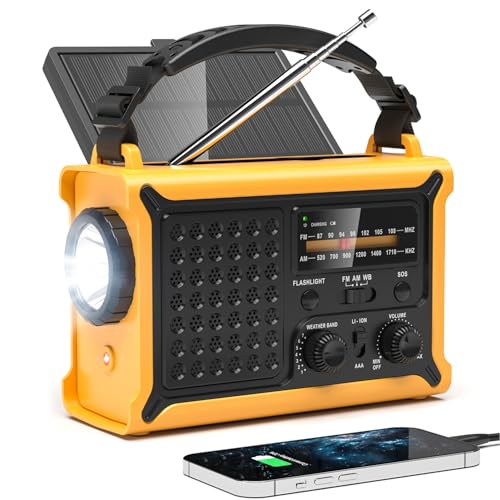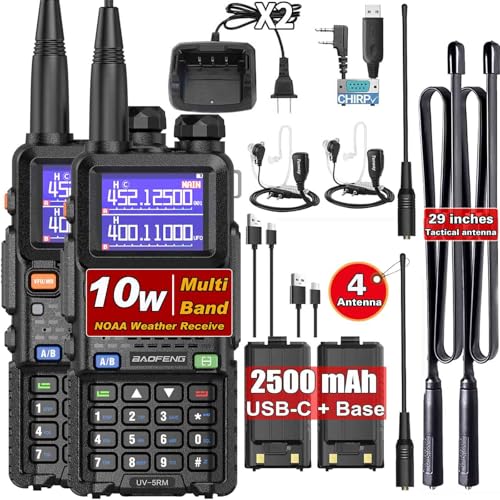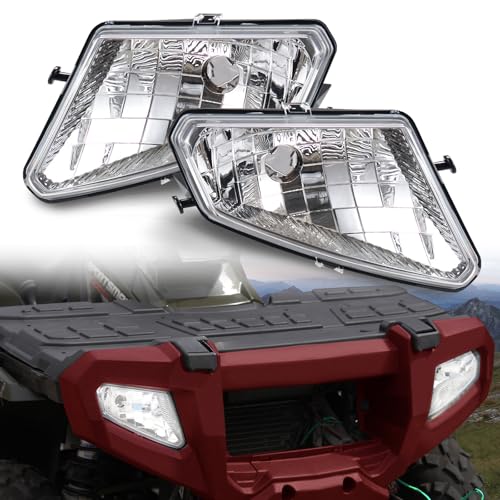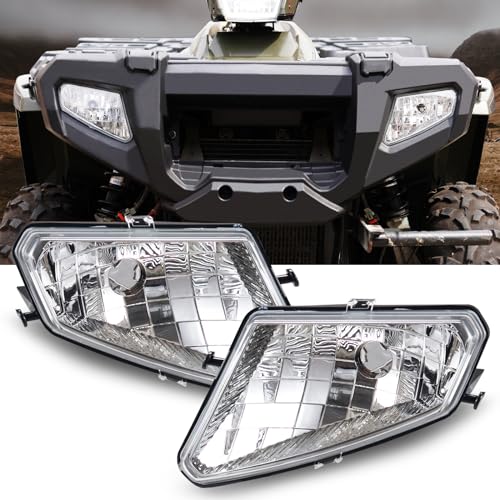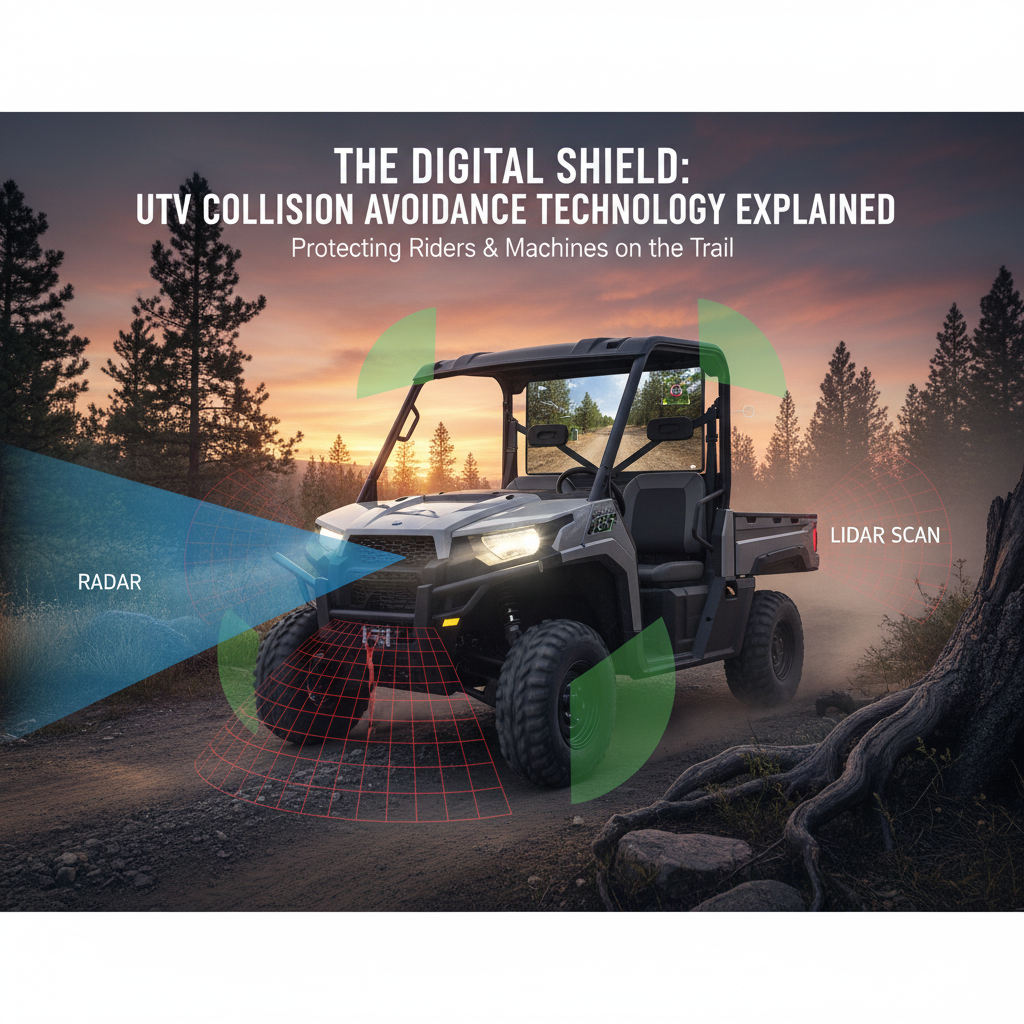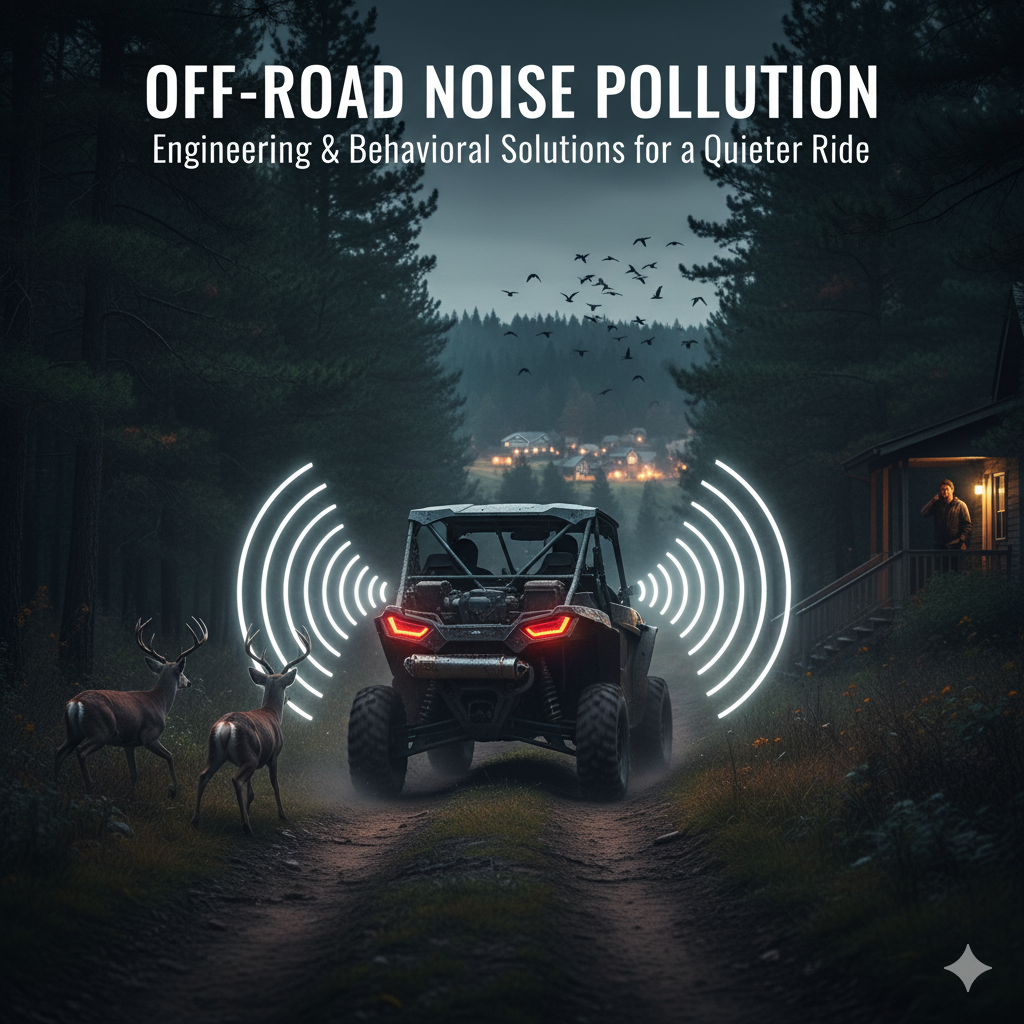The beauty of off-roading is its unpredictability. One moment you’re enjoying a sunny trail, and the next, a flash flood warning or a severe thunderstorm is bearing down on your location. Unlike driving on paved roads, where a quick pull-off or a gas station offers shelter, the backcountry leaves you exposed. In these remote environments, a few minutes of warning can be the difference between a minor inconvenience and a life-threatening situation.
This is why weather alert systems for off-road vehicles are no longer a luxury—they are a fundamental component of responsible off-road preparedness. Relying on a standard cell phone weather app is simply not enough when you are miles from the nearest cell tower. You need rugged, reliable, and dedicated technology that can deliver critical alerts when you need them most.
I’ve personally witnessed how quickly conditions can change on the trail, turning a dry creek bed into a raging river in minutes. This guide will explore the most effective weather alert technologies available to UTV and ATV enthusiasts, detail how to integrate them into your machine, and provide the essential best practices for handling severe weather in the backcountry.

Phase 1: The Three Pillars of Off-Road Weather Alert Technology
Effective weather alerting in remote areas requires a multi-layered approach, utilizing systems that function independently of cellular networks.
1. NOAA Weather Radios (The Gold Standard)
The National Oceanic and Atmospheric Administration (NOAA) Weather Radio All Hazards (NWR) is the most reliable source for continuous, real-time weather information directly from the National Weather Service.
- How it Works: NWR broadcasts official warnings, watches, forecasts, and other hazard information 24 hours a day, seven days a week, directly from local NWS offices.
- S.A.M.E. Technology: Modern NOAA radios use Specific Area Message Encoding (S.A.M.E.) technology, allowing you to program the radio to only alert you for warnings specific to your county, avoiding unnecessary alerts.
- Off-Road Integration: Rugged, portable, and even hardwired NOAA radios are available. They are a must-have because they function solely on radio waves and a dedicated power source, making them impervious to cell service outages.
2. Satellite Messengers (The All-in-One Solution)
As discussed in previous guides, satellite messengers (like Garmin inReach) are primarily for communication, but they also offer robust weather services.
- Subscription-Based Forecasts: These devices can download detailed, location-specific weather forecasts via the satellite network, including marine, aviation, and basic forecasts.
- Reliability: Since they use satellite communication, they work anywhere in the world, making them an excellent backup and primary source for weather data when deep in the backcountry.
3. App-Based Solutions (The Planning Tool)
While not reliable for real-time alerts in a dead zone, weather apps are crucial for pre-trip planning and near-town use.
- Radar and Forecasting: Apps like RadarScope or Windy provide high-resolution radar and predictive models that are invaluable for understanding the movement of storms before you lose service.
- Best Practice: Download area maps and check the forecast immediately before leaving a service area.
| System Type | Primary Function | Reliance on Cell Service | Best Use Case |
|---|---|---|---|
| NOAA Radio | Real-time, localized alerts | None | Primary source for severe weather warnings. |
| Satellite Messenger | Global communication & tracking | None | Backup alerts, detailed remote forecasts. |
| Weather Apps | Radar & predictive models | High | Pre-trip planning and near-town use. |
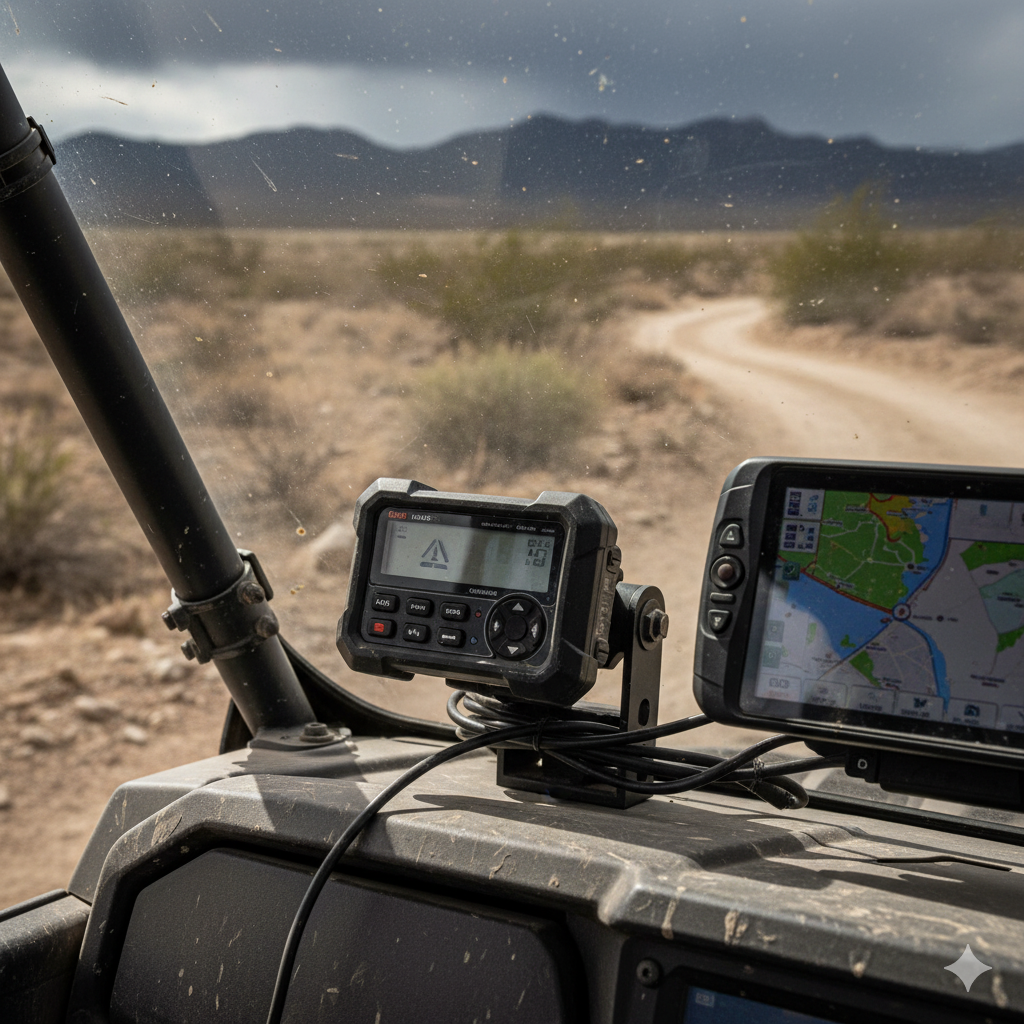
Phase 2: Integration and Mounting for UTVs
For weather alert systems for off-road vehicles to be effective, they must be mounted securely and powered reliably.
1. Hardwired NOAA Radio Installation
A dedicated, hardwired NOAA radio is the most reliable setup for a UTV.
- Antenna Placement: The antenna is critical. Mount it externally on the roll cage or roof, ensuring it has a clear line of sight. Use a marine-grade antenna for maximum durability and weather resistance.
- Power Source: Wire the radio directly to a fused accessory busbar or a dedicated fuse block. This ensures the radio has a constant, clean power supply and can operate even when the UTV is turned off.
- Speaker Placement: Mount the speaker in a location where it can be clearly heard over the engine noise and wind, such as near the driver’s head or integrated into the dash.
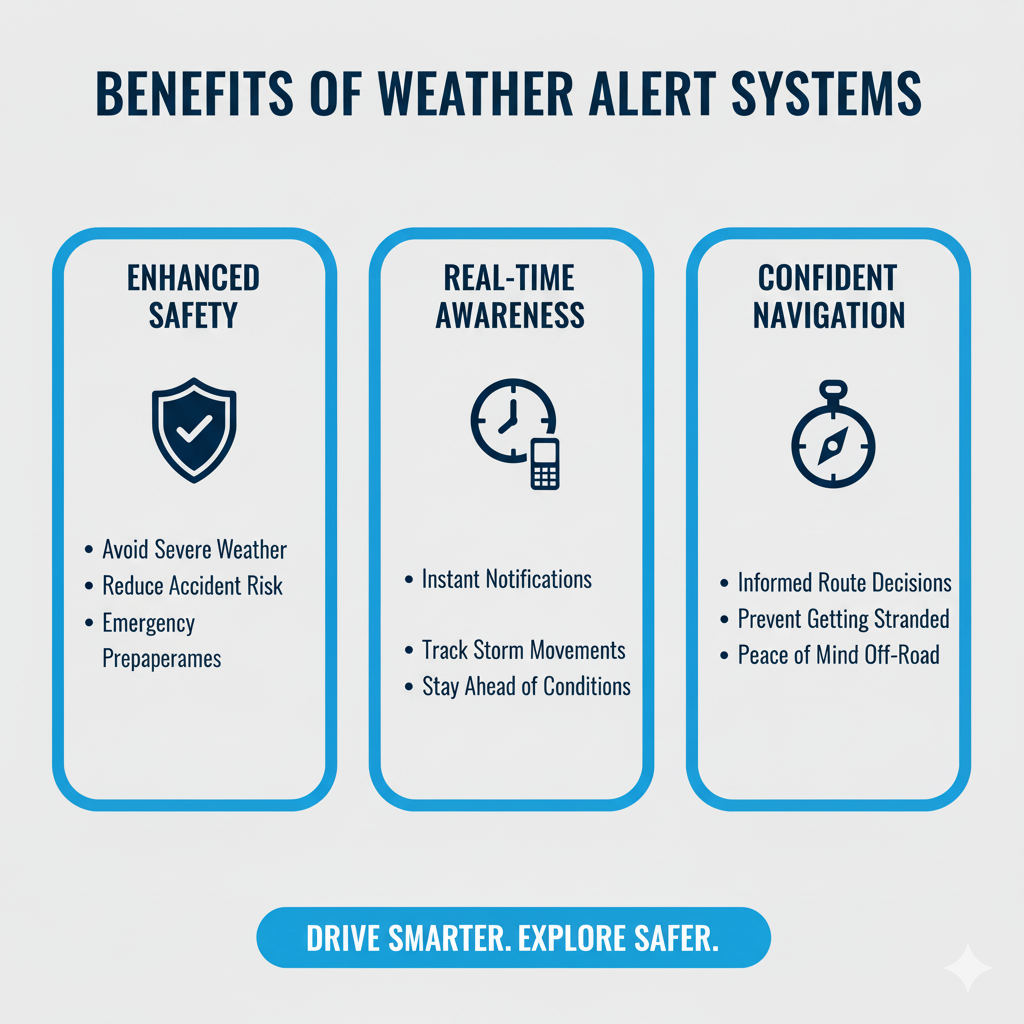
2. Satellite Messenger Integration
If you use a satellite messenger for weather alerts, ensure it is easily accessible.
- Mounting: Use a RAM mount or similar rugged system to secure the device to the roll cage or dash. The mount should allow for quick removal in case you need to take the device with you on foot.
- External Antenna: If your messenger supports it, an external antenna mounted on the roof will significantly improve its ability to download weather data quickly.
Phase 3: Best Practices for Severe Weather Off-Roading
Receiving a weather alert is only the first step. Knowing how to react to it is what truly saves the day.
1. Flash Flood Warning
Flash floods are one of the greatest dangers in the backcountry, especially in desert or mountainous terrain.
- Action: Immediately move to higher ground. Do not attempt to cross moving water, even if it looks shallow. Remember the NHTSA warning: “Turn around, don’t drown.”
- Terrain Awareness: Be aware of your surroundings. If you are in a canyon, a wash, or a low-lying area, you are at extreme risk.
2. Severe Thunderstorm Warning
Severe thunderstorms bring lightning, high winds, and heavy rain, which can quickly make trails impassable.
- Action: Seek shelter immediately. Avoid being the highest object in the area (lightning risk). If possible, find a sturdy, enclosed structure. If not, stay inside the UTV, which can offer some protection due to the roll cage acting as a Faraday cage (though this is not guaranteed).
- Driving: Reduce speed drastically. Heavy rain and hail severely limit visibility. Be gentle on the brakes and gas pedal, as traction will be significantly reduced.
3. Snow and Ice
Unexpected snow or ice can turn a fun ride into a survival situation.
- Action: If the trail becomes slick, air down your tires slightly to increase the contact patch. Engage four-wheel drive and drive slowly. If conditions become too dangerous, stop, secure your UTV, and wait for conditions to improve or call for help.
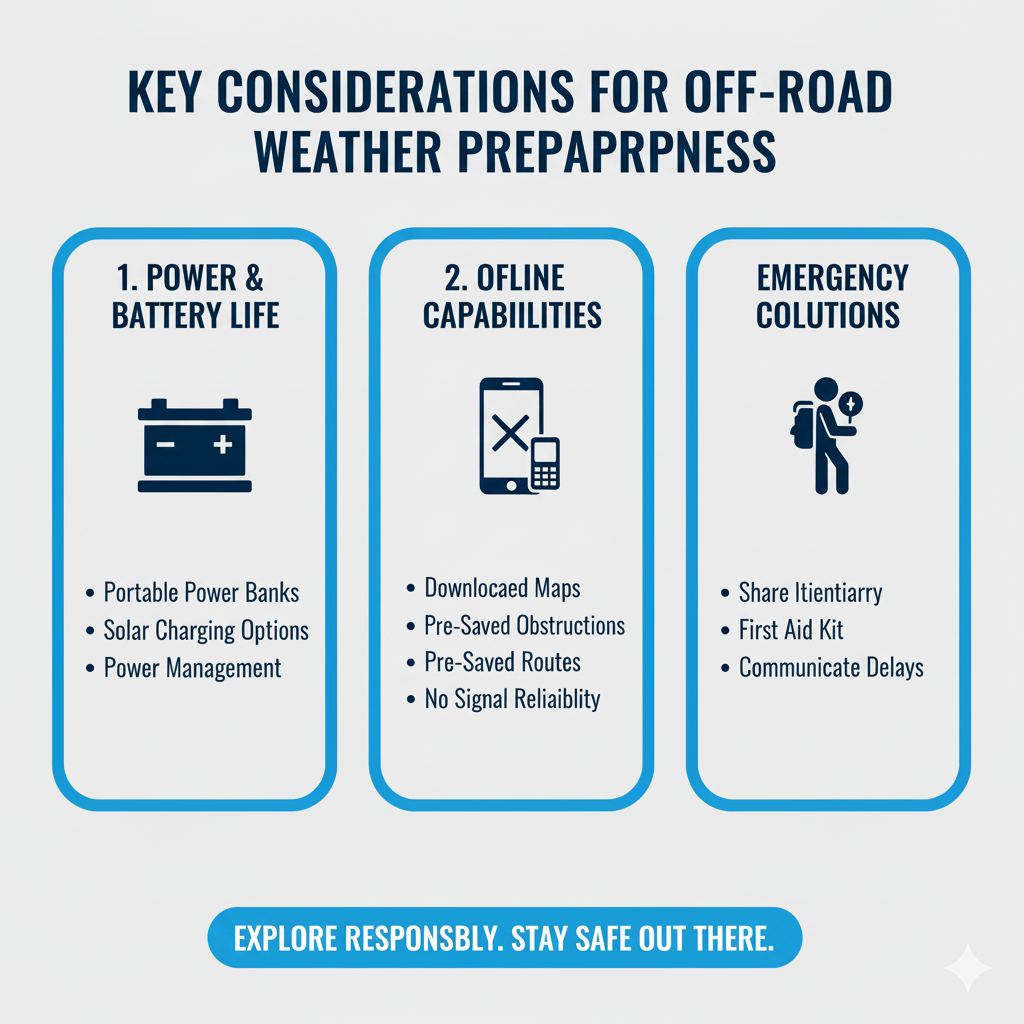
Conclusion: Preparedness is the Ultimate Upgrade
The integration of weather alert systems for off-road vehicles is a non-negotiable part of your safety checklist. The ability to receive a timely, accurate warning about a severe weather event is a powerful tool that allows you to make informed decisions and avoid dangerous situations.
By equipping your UTV with a reliable NOAA radio and a satellite messenger, you are creating a robust communication and alert network that functions regardless of cell service. Don’t rely on luck; rely on technology and preparedness.
Know the forecast, respect the weather, and ride safe.
References
[1] Weather.gov – SAME Weather Radios
[2] Midland USA – Two-Way Radios and Weather Radios
[3] Public Lands – The Best Options for Off Grid Communication
[4] NHTSA – Driving in Severe Weather
[5] TopLift Pros – Tips for Off-Roading Safely in the Rain

